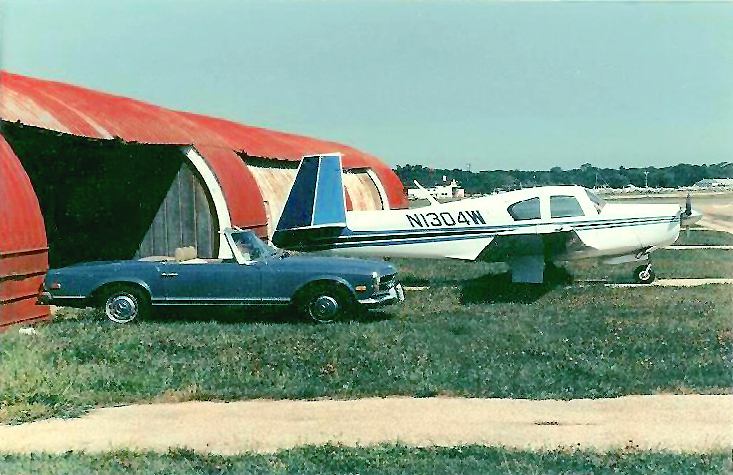1986
Reassessment
Although the FAA had certified me to fly a five thousand pound twin with 570 horsepower through the sky at more than 190 knots (220 mph) in all kinds of weather, a streak of burnt rubber on the pavement and a mashed up runway light off to the side left me not so sure. Much as I hated to admit it, I was in over my head.
But it was not time to give up. By this time, I had accumulated ample experience to move ahead. Clearly, I needed to step back in performance, but I could still fly a plane that would take me anywhere in the U.S. in all but the worst weather. Back to Trade-A-Plane to find the right one.
Moving ahead
I’ve often heard that the best way to master a subject is to teach it. If the subject is aviation, the FAA requires two new ratings: Commercial Pilot Certificate and Certified Flight Instructor.
So while searching through Trade-A-Plane, I went back to school. Priester Aviation offered just the right combination of plane and instructor. While flying the Baron was challenging, I did gain enough experience that a commercial rating when there was only one engine to deal with took less than twenty hours, including a check ride.
A realistic choice
Although limiting my choices to single engine planes was humbling, flipping the pages of TAP still brought me back to the Christmas Toy Catalog. What will it be? Bonanza? Piper Arrow? Cessna Skylane? Mooney? I checked them all out.
Much like my search for the Baron, the answer leaped off the pages. A Mooney owner in Ocala, Florida wanted to trade his Mooney M20E Super 21 for a Baron. Mooneys are loved for speed and efficiency and the Super 21 had more power and speed than its predecessors. Perfect.
When I contacted him, the story got even better – the private strip in his backyard was right around the corner from my parents home in Orlando.
My favorite description of flying a Mooney is “Strap it on your back and go like the devil!” Music to my ears. After a few conversations, I launched for Florida in what was to be my final trip in the Baron.
The owner’s runway provided me with yet another new experience – landing a twin on grass. But the runway was very smooth and not nearly as intimidating as that short one in New Jersey. We test drove each other’s planes and signed some papers. Then I pocketed a nice fat check as I flew away in my Mooney.
The next step forward
The next step, Certified Flight Instructor, was more challenging. It required an instructional level of ground knowledge, flight from the instructor seat, and knowledge of the fundamentals of instruction.
The FAA insisted that to teach flying I must first learn how to teach. Imagine that. Sensibly enough, certified teachers met this requirement with nothing more than presenting their teaching certifications. Actually I liked this part of the course as much as the flying. Much of what I learned served me well back in the office.
Meeting the flight requirements was also multi-faceted. First, obviously I had to demonstrate all of the flight maneuvers required as a Commercial Pilot … but as an instructor I had to do them from the right seat.
Beyond simply flying, I also had to demonstrate the ability to recognize and correct errors students inevitably made. Especially the potentially hazardous ones. Weeks of studying, two knowledge tests and about ten more hours of flying did the job.
Congratulations to me. I was now a professional pilot. I was licensed to teach others to fly. I was flying a machine that I could master. And as a bonus – I already had hours of experience in my Mooney.
Total flying time to date: 660 hours
New types: Cessna 172RG (retractable), Mooney M20E
New ratings: Commercial Pilot, ; Certified Flight Instructor, ASEL

